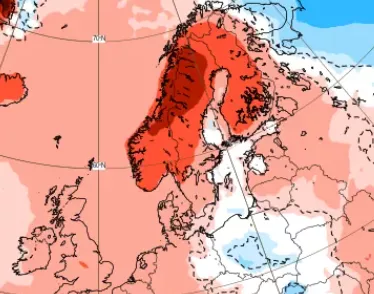
Forecast Arctic Heat: +35 °C Above the Polar Circle (12–17 July 2025)
Forecast models predict a strong high-pressure ridge pushing Abnormally Warm Air well above the Arctic Circle in northern Norway, Sweden, and Finland between 12 and 17 July 2025. Temperature anomalies of +6 °C to +10 °C above seasonal averages are expected. Peak daytime temperatures could reach up to +35 °C (+3°C needed to add to GFS outputs for local extremes), a magnitude rarely seen in these high latitudes. Overnight temperatures may remain elevated, with models suggesting minima remaining in the low to mid-20s °C—tropical-night conditions at 70°N .
Forecast models indicate a strong probability of renewed extreme heat with temperatures around +35°C in these northernmost regions, a level that would significantly exceed the climatological norms and approach or break past heat records.
Such sustained heat episodes in the Arctic summer are of scientific and practical concern, illustrating how climate change is reshaping traditional northern summer climates—turning cool, temperate summers into periods of intense heat, with wide-ranging ecological and societal consequences.
North Scandinavian Summers: Typical Climate and Emerging Extremes
The northern parts of Scandinavia, encompassing Norway, Sweden, and Finland above the Arctic Circle (roughly 66.5°N), traditionally experience short, cool summers with relatively mild temperatures compared to lower latitudes. Summer months, especially June through August, usually feature:
- Average daily highs ranging from 15°C to 22°C, depending on proximity to the coast or inland areas.
- Long daylight hours due to the Midnight Sun phenomenon, where the sun remains visible at midnight for several weeks, particularly above 69°N.
- Cool nights, often dropping below 10°C, and sometimes even near freezing in higher elevations.
- Summer rainfall is moderate but can be variable, with occasional thunderstorms.
This cool, temperate summer regime is a hallmark of sub-Arctic and Arctic climates and supports boreal forests, tundra ecosystems, and traditional livelihoods such as reindeer herding and fishing.
Historical Records Above the Arctic Circle
On previous occasions, Scandinavia has already pushed thermal boundaries in northern latitudes:
- July 2018 heatwave:
- Norway’s Bardufoss (66°N) reached 33.5 °C on 17 July
- Finland’s Kevo (69.9°N) recorded 33.4 °C on 17 July
- Several Arctic Circle stations climbed above 30 °C, such as Saltdal (66.9°N) and Alta airport (70°N)
- Makkaur Lighthouse (70.7°N) saw a nightly low not falling below 25.2 °C—a national warm-night record
- July 2019 heatwave:
- Mosjøen Airport hit 35 °C, tying Norway’s highest Arctic Circle temperature
- Saltdal (northern Norway) recorded 34 °C, setting a new Arctic heat record
- Markusvinsa (northern Sweden) reached 34.8 °C, the highest temperature recorded above the Arctic Circle in Sweden
These events were linked to intense southerly airflow under blocking anticyclones, occasionally reaching anomalies of +9 to +11 °C above climatology
Conclusion
Forecasts for mid-July 2025 indicate a robust repeat of these extreme events, with daytime highs potentially touching +35 °C well above 66°N. Coupled with tropical-night conditions, this would match or exceed previous record Arctic heatwaves. The warming pattern—marked by extremes in both daytime highs and nighttime minima—underscores the growing trend of heatwave intrusion into the high Arctic.

Weekly Anomaly in Region between 14.-21. July 2025. Source: https://charts.ecmwf.int/products/extended-anomaly-2t?base_time=202507100000&projection=opencharts_europe&valid_time=202507210000
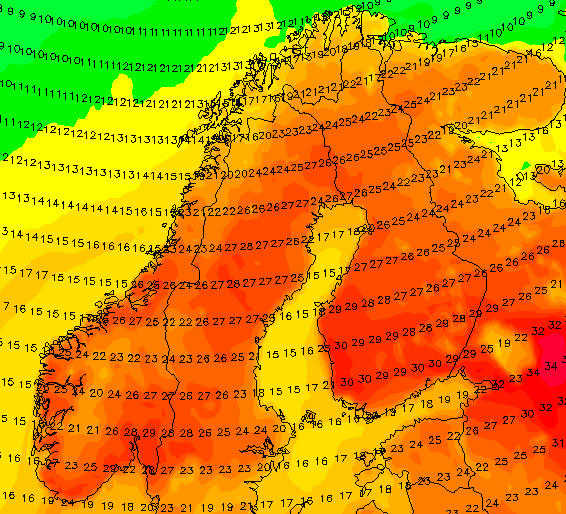
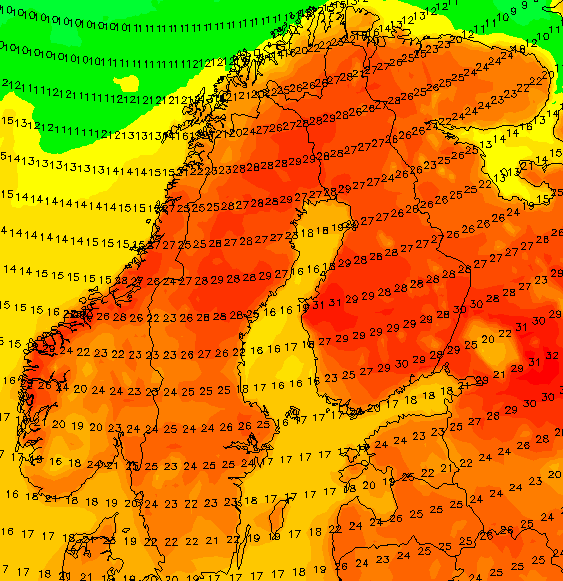
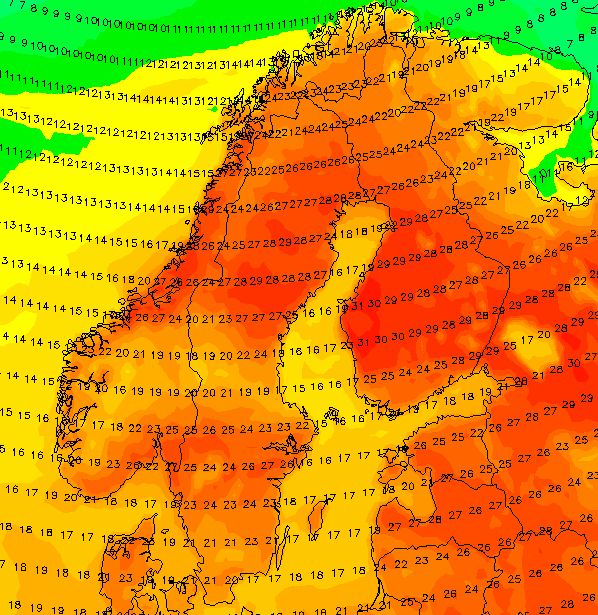
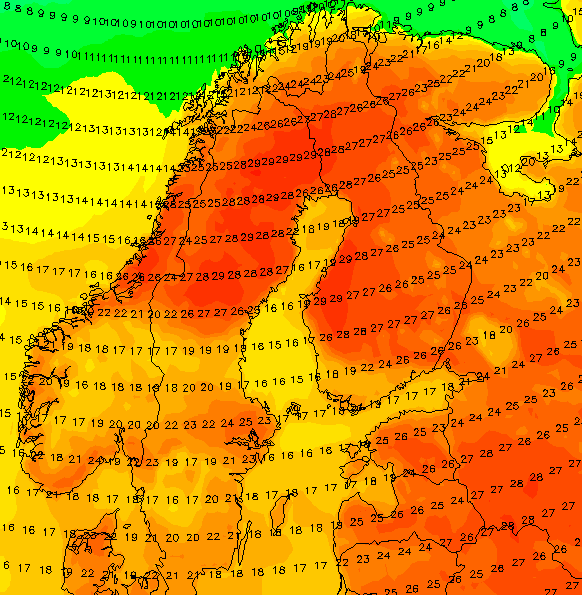
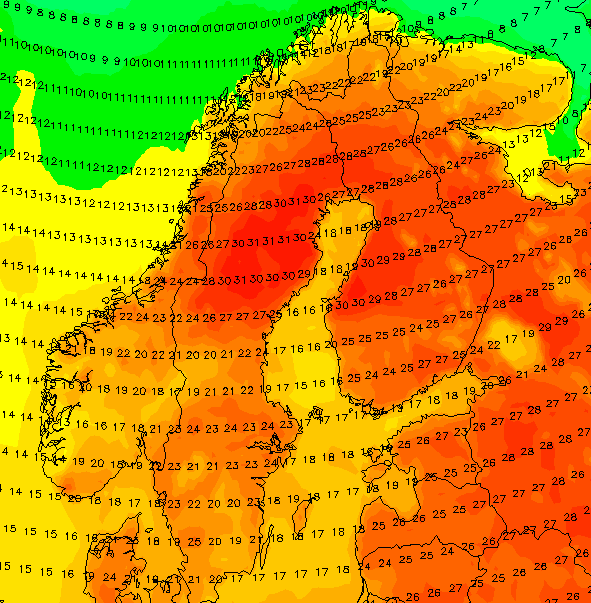
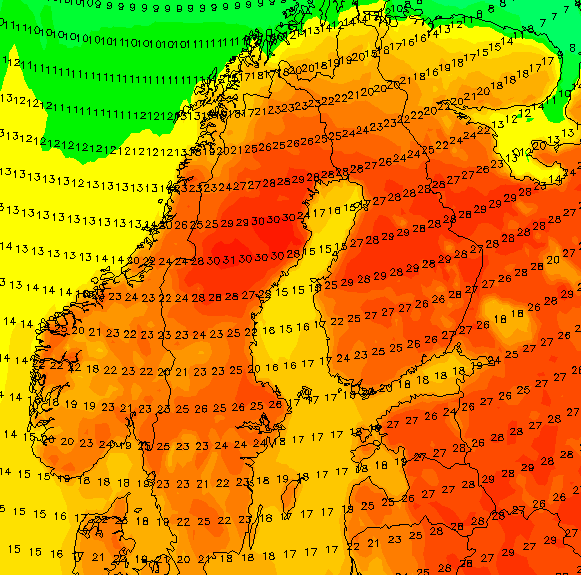
Maximum Temperatures in Region between 12. and 17. July 2025. Source: wetterzentrale.de


























